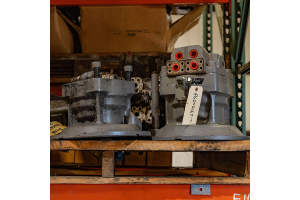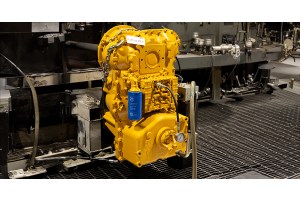
Working on slopes can be tricky business. Excavator operators have much more to think about when it comes to staying safe. Here are some tips to help get the job done right without any incidents.
As with any work on a job-site, operators must be focused on what is going on around them. When positioned on a slope, this requires even more attention to detail.

Slope work should be done by experienced operators. If you don't have the experience, it is best to get someone who does. When starting out as an operator, work on small slopes and work your way up.
Single-bar grousers offer the best traction for slope work as they penetrate the ground better for extra traction.
The most important operation tip is to have the track positioned correctly when on a slope. Be sure the tracks are pointed up and down when working on the slope. Drive motors are heavy, so you want more weight behind you. Having them positioned sideways could cause the machine to slip or even tip.
The idlers should be forward for uphill work and pointed down slope for downhill work. Idlers are designed to take the digging force of the machine and spread it across the frame.

When moving the machine uphill, stretch out the arm and keep the boom low to the slope. This places the weight of the bucket and boom ahead of the machine. Operators put the bucket teeth on the ground and use the arm to help pull the machine forward.
Slope work requires a lot of coordination as the operator is using their feet to run the travel motors, while using their hands for the controls. When operators are digging on a slope, they need to adjust the amount of effort put into the controls. When the machine is not balanced, weight can shift quickly causing problems.
Don't move the boom when the machine is in motion. This can cause an unexpected weight shift and severely compromise stability. Before repositioning, stop forward motion.
If you are digging a trench while on a slope, the boom and arm should be positioned fairly close to the machine when swinging the cab. When moving out of a hole, bring the mast in toward the machine so the swing torque will allow the machine to swing. If stretched all the way out, the momentum behind the swing is significant. For this reason, bring the boom and arm in and pull the mast toward the swing bearing to assist the machine.
If you are swinging downhill, be very gentle on the swing motor. When coming off of the motor with a full bucket, the swing brake will work. However, if you have too much momentum, it will attempt to turn all the way back around and continue swinging downhill against the swing brake
Don’t place the bucket out too far. Pull the bucket in and swing gently so the swing brake can do its job. If the bucket is big and the material is heavy, and the machine is too far out on the arm, the momentum and weight will overcome the swing brake.
Avoid exceeding the recommended gradation for long periods of time. On severe slopes, it’s hard for the engine to pump oil to the top of the motor.









